How to Make Pistachio Paste | Homemade Pistachio Cream
Learn how to make homemade pistachio paste (pistachio butter). All you need is one ingredient and a good blender. With this pistachio paste you can make pastries, cakes, desserts, cookies and even pistachio ice cream.
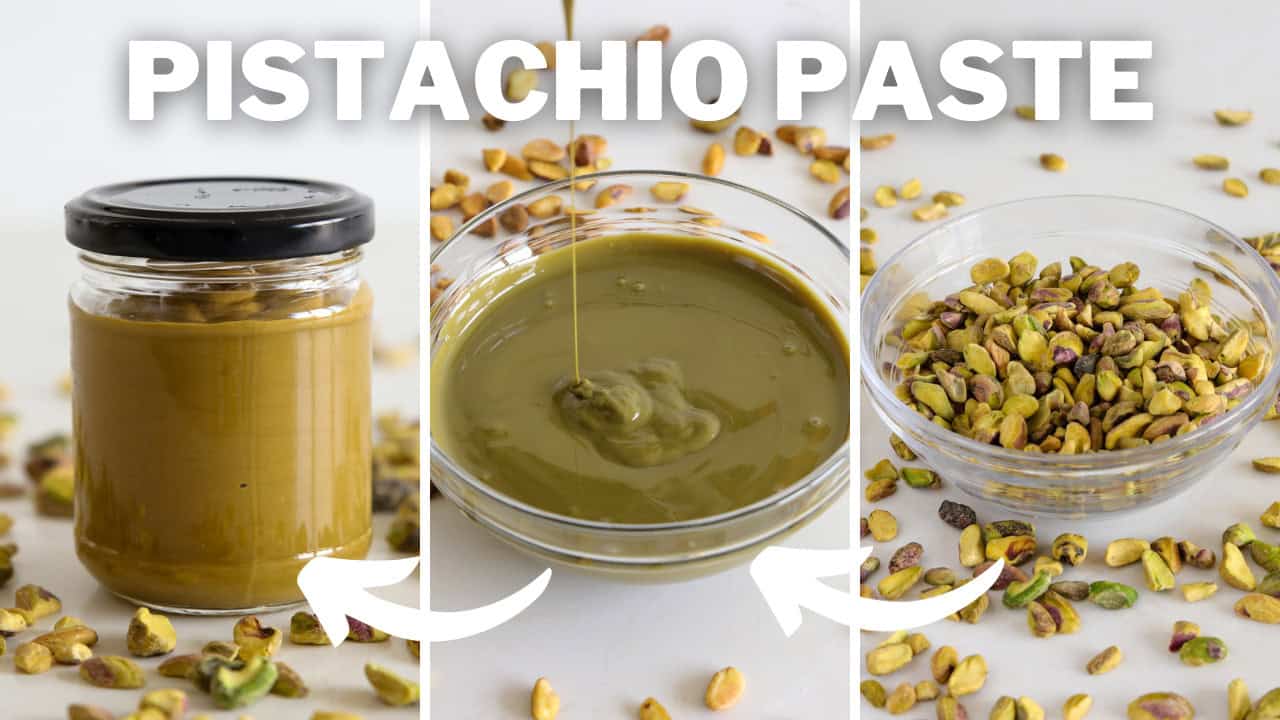
Video Recipe 📹
Watch the full video recipe to learn how to make homemade pistachio paste. This step-by-step tutorial simplifies the process, offering tips and tricks to guarantee perfect results every time.
Prefer the written recipe? Scroll down to the recipe box 👇
What is Pistachio Paste?
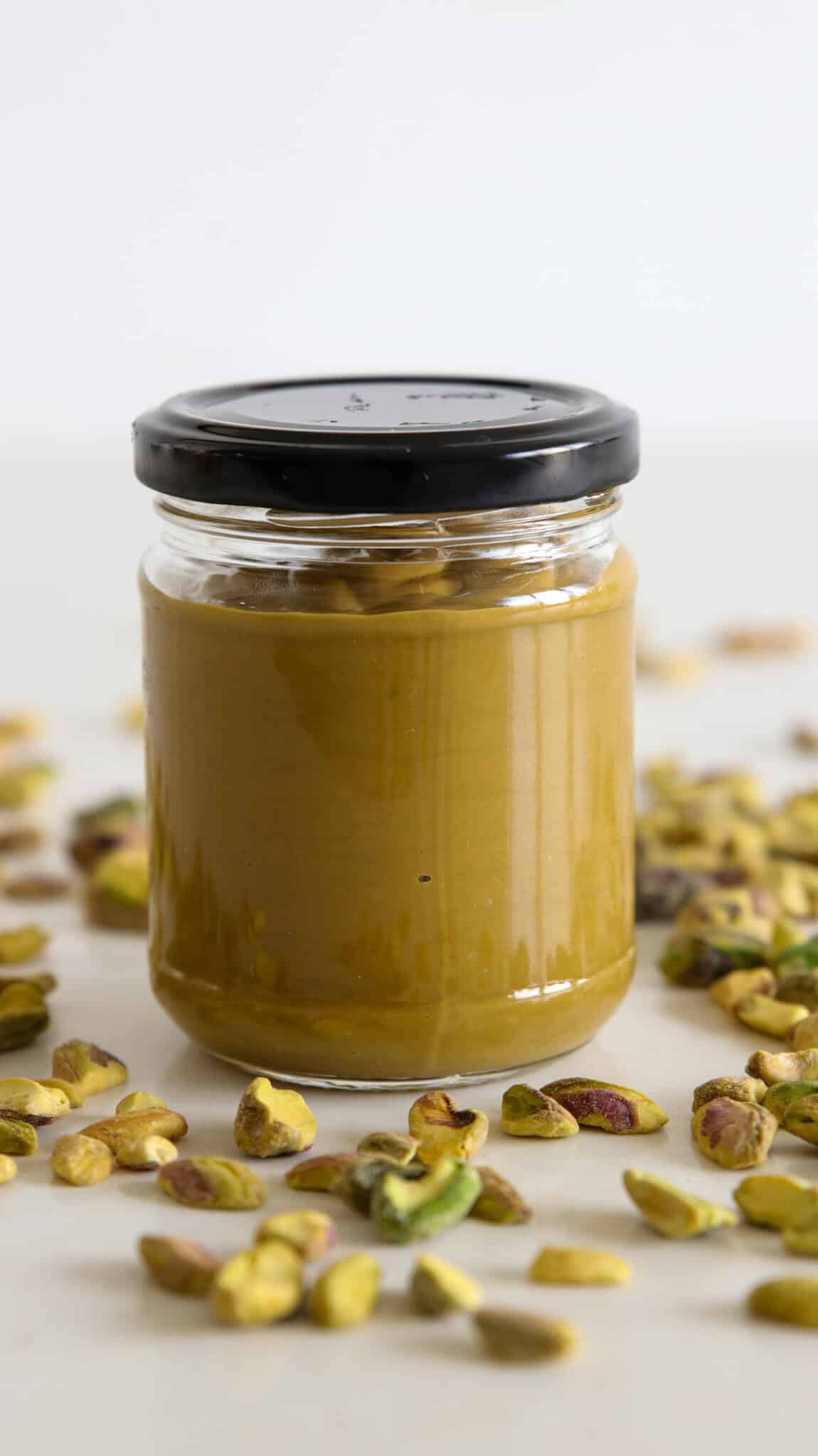
Pistachio paste is a creamy and flavorful spread made from ground pistachios. It is a versatile ingredient used in both sweet and savory dishes, adding a rich and nutty flavor. The paste is often used in culinary applications to enhance both the taste and color of dishes. Its velvety texture makes it a valuable ingredient in baking, confectionery, and savory preparations, adding a unique pistachio essence to a wide range of recipes.
What is The Difference Between Pistachio Butter and Pistachio Paste?
The terms “pistachio butter” and “pistachio paste” are often used interchangeably, but some may differentiate them based on texture. Pistachio paste is generally smoother, while pistachio butter might have a coarser texture, similar to nut butter.
What is The Difference Between Pistachio Paste and Pistachio Cream?
In some recipes and even in certain stores, the term “pistachio cream” is mistakenly used to refer to pistachio paste. Always be sure to check the label—if it’s a true pistachio paste, it should have only one ingredient: pistachios. If you’re looking for the unsweetened, pure version, double-check the packaging to avoid confusion!
1. Pistachio Paste:
- Ingredients: True pistachio paste is made from just one ingredient—ground pistachios. Sometimes a small amount of oil or salt may be added, but traditionally, it is unsweetened and pure.
- Texture: It has a thick, smooth, and dense texture with an intense pistachio flavor. The texture can sometimes feel slightly gritty due to the ground nuts.
- Use: Often used in baking and pastry-making to add a concentrated pistachio flavor to cakes, tarts, ice cream, and other desserts. It’s versatile and used for both sweet and savory dishes.
2. Pistachio Cream:
- Ingredients: This is made from pistachios along with sugar, milk or milk powder, oils, and sometimes flavorings. The added sugar makes it sweet and indulgent.
- Texture: It has a creamy, smooth, and spreadable consistency, perfect for enjoying like a spread (similar to Nutella) or as a filling for desserts.
- Use: Pistachio cream is most commonly used as a spread or a filling for pastries, cookies, or drizzling over desserts. Its sweetness makes it more of a ready-to-eat product than pistachio paste.
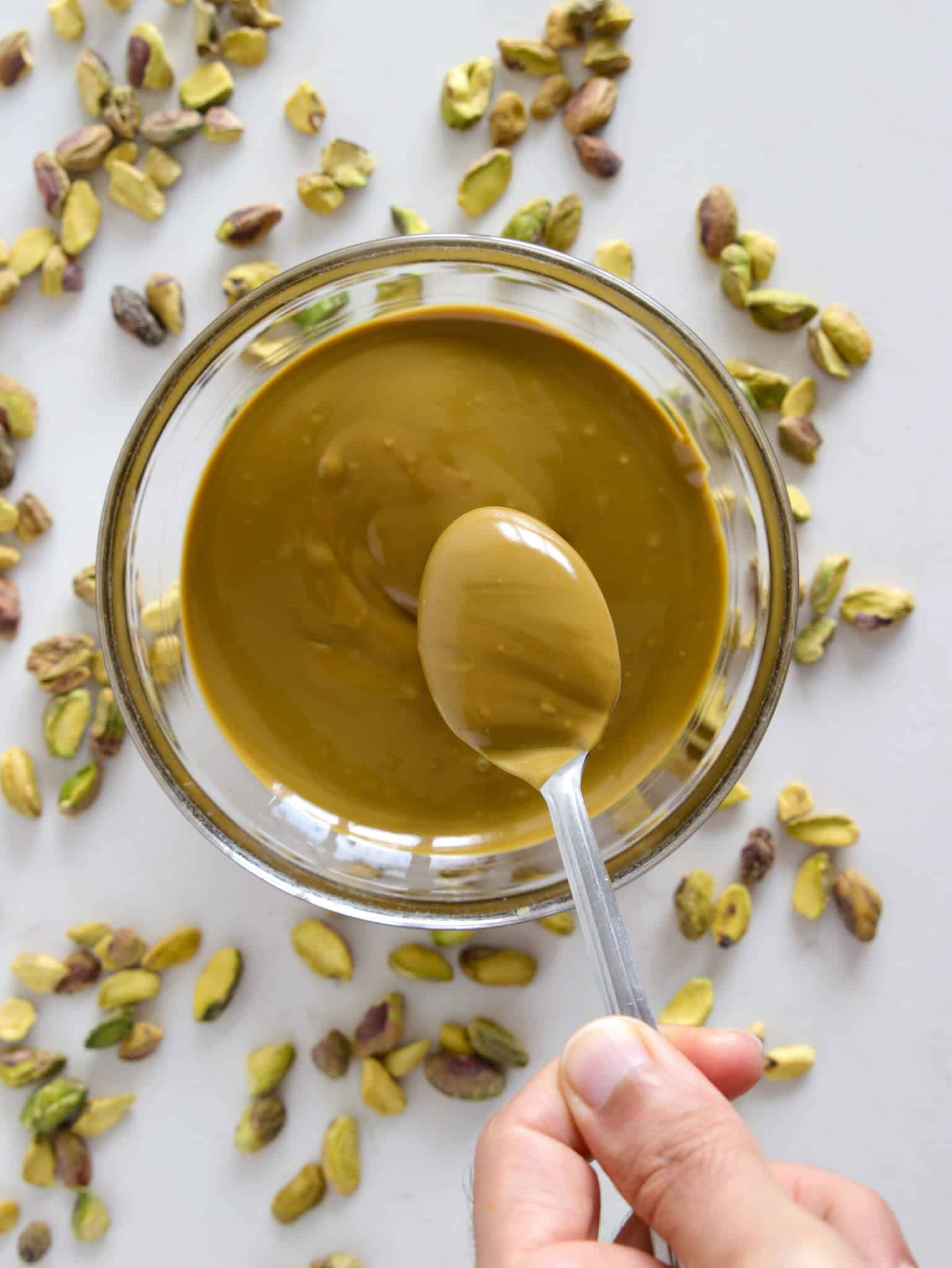
How to Make Homemade Pistachio Paste?
Actually, the process of making pistachio paste (butter) is very simple. To make pistachio paste at home, blend shelled pistachios in a powerful blender or a food processor until they form a smooth, buttery consistency. You your blender is not powerful enough; you may need to add a small amount of oil to achieve the desired texture.
Why My Pistachio Paste is Brown and Not Green?
The color of pistachio paste can be influenced by various factors. If your pistachio paste appears brown instead of green, it may be due to the roasting process or the use of roasted pistachios. Roasting can deepen the color and alter the flavor profile, but it sacrifices the vibrant green hue. To maintain a green color, opt for raw, unsalted pistachios, and avoid excessive processing time that may lead to oxidation. Also, if it’s possible, peel the pistachio skin. This process might be difficult in-home conditions, but it helps reveal the deep green color. It is important to remember that the color does not affect the taste, and pistachios’ natural color is not completely green. Eventually, if it’s essential, you can add 1-2 drops of green gel food coloring to your paste, as I showed in the video.
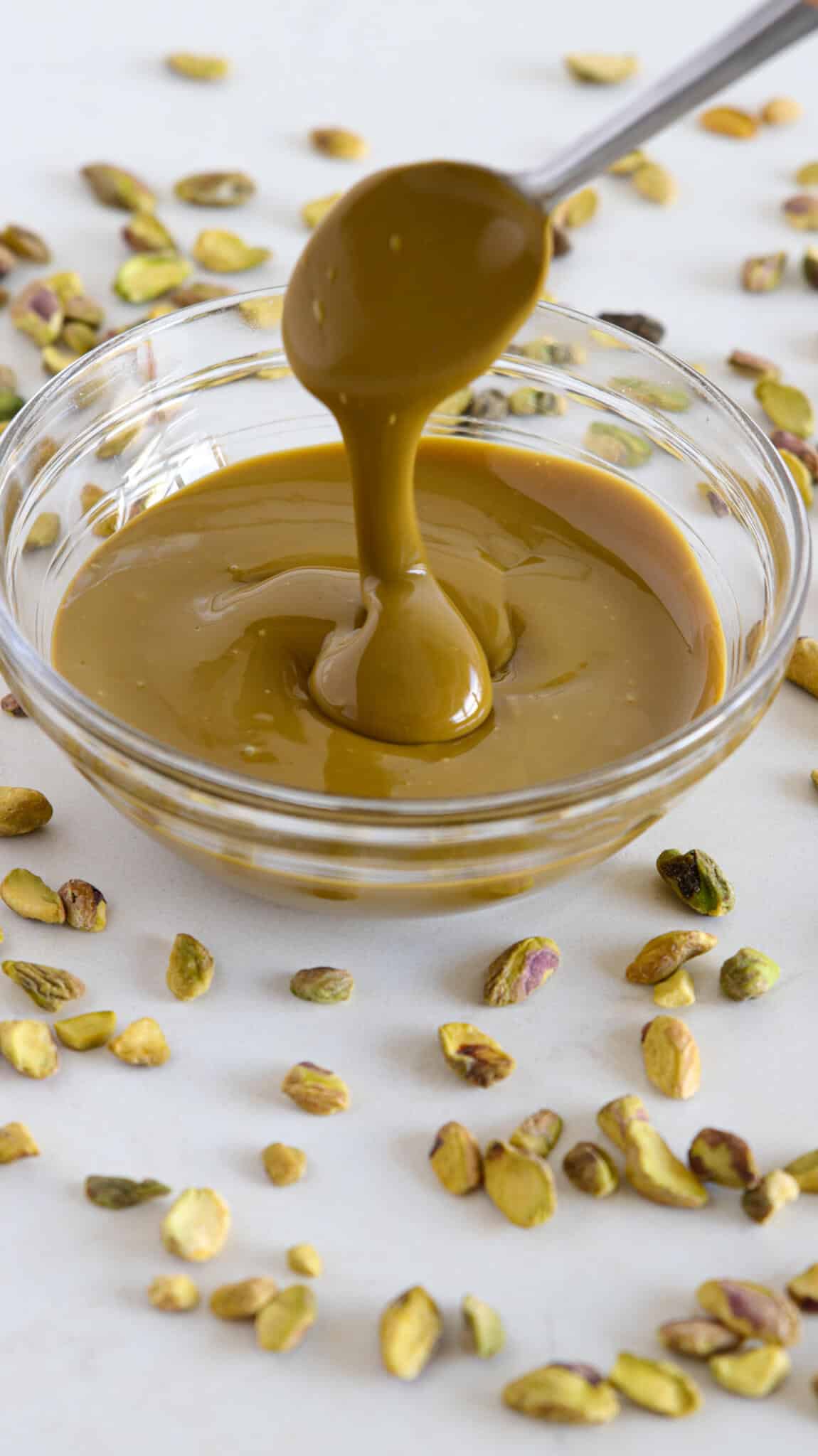
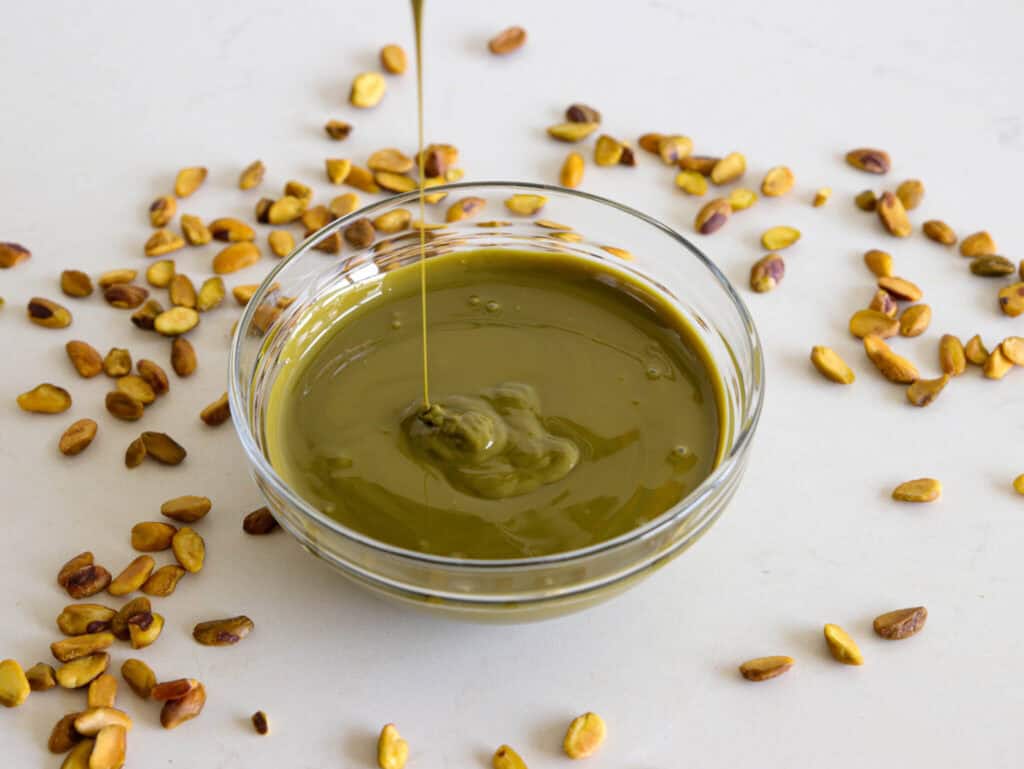
Pro-tip to make your paste green
Blanch and Remove the Skins: The brown outer skins of pistachios can dull the color of the paste. Blanch the pistachios by boiling them for about 30 seconds, then immediately transferring them to an ice bath. Once cooled, peel off the skins to reveal the green kernels. Then proceed to blending.
Can We Use Shelled Pistachios?
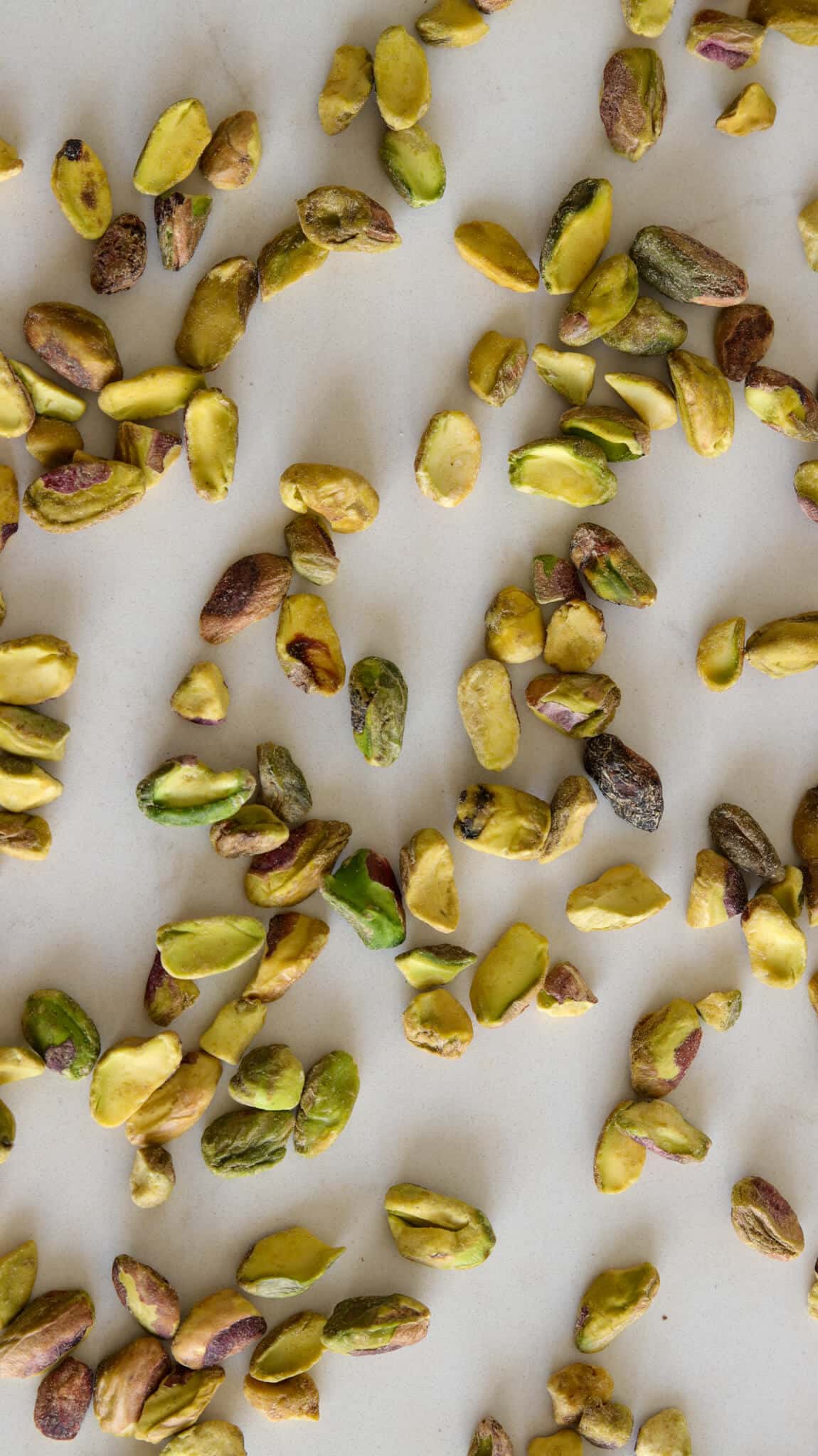
In the video I made the paste from scratch and showed how I peel the pistachios from its shell, but it is recommended to use shelled pistachios for making pistachio paste to save time and effort.
Why Is My Pistachio Paste Not Smooth?
Achieving a smooth pistachio paste requires proper processing. If your paste is not as smooth as desired, consider the following tips: Ensure your pistachios are fresh and of high quality. Use a powerful food processor or blender to grind them finely. Pause occasionally to scrape down the sides, ensuring even processing. If the paste still lacks smoothness, adding a small amount of neutral oil, such as grapeseed or almond oil, can help achieve the desired creamy consistency.
Why Pistachio Cream is So Expensive?
Pistachio cream can be expensive due to the high cost of raw pistachios, labor-intensive harvesting, and the quantity needed to produce a small amount of butter. Additionally, pistachios are often considered a premium nut.
Is It cheaper To Buy or to Make Pistachio Cream?
Making pistachio butter at home can be cost-effective, especially if you buy pistachios in bulk. However, the overall cost depends on the availability and pricing of pistachios in your area.
What are The Healthy Benefits of Pistachio Paste?
Pistachio butter, like whole pistachios, provides a range of health benefits. It is a good source of monounsaturated and polyunsaturated fats, which are heart-healthy fats that may help lower bad cholesterol levels. Additionally, pistachios are rich in protein, fiber, vitamins (such as B vitamins), and minerals (like potassium and magnesium). The presence of antioxidants, such as lutein and zeaxanthin, in pistachios may contribute to eye health. Including pistachio butter in your diet in moderation can support overall well-being, including cardiovascular health and weight management.
What Equipment Do I Need to Make Pistachio Paste at Home?
You’ll need a reliable food processor or blender to grind the pistachios into a smooth paste. A spatula, measuring tools, and an airtight container for storage are also essential.
Here are some powerful food processors I can recommend for making pistachio paste or any nut butter at home:
*These links are affiliate links
What Recipes Can We Make Using Pistachio Paste?
Pistachio paste (AKA pistachio cream) can be used in a variety of recipes, including desserts like cookies, cakes, and ice creams. It can also be incorporated into savory dishes like sauces, dressings, and dips. Experiment with adding it to smoothies or spreading it on toast for a delightful treat.
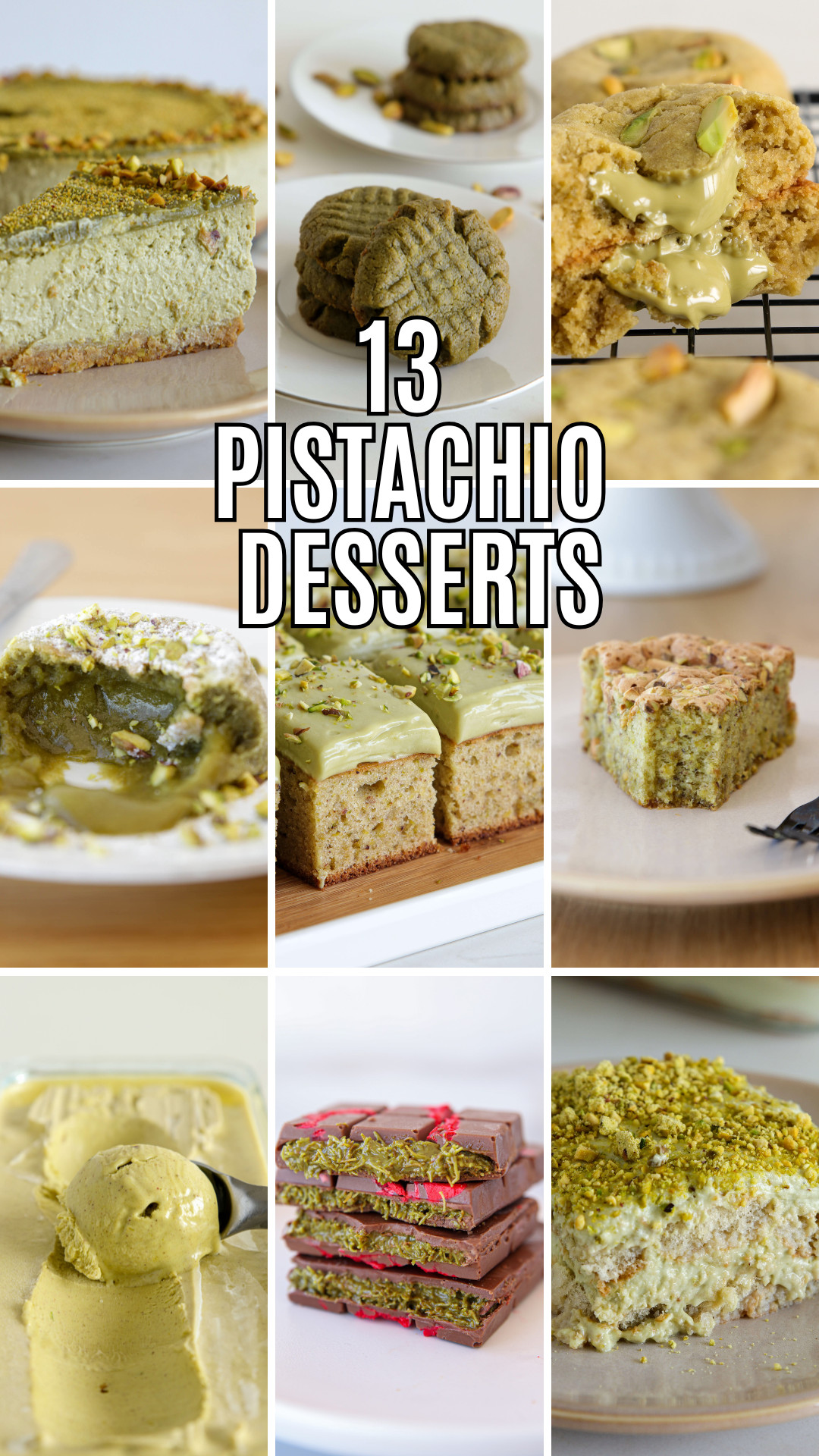
Now that you know how to make a real high quality pistachio paste at home, you can try making 13 of our best pistachio desserts. And if that’s not enough for you can find more pistachio recipe ideas.
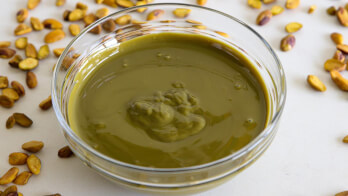
Homemade Pistachio Paste Recipe
Equipment
Ingredients
- 400 g Pistachios unsalted
Instructions
- Preheat oven to 350F (180C).
- Make pistachio paste: peel the pistachios from the shell. Roast the pistachios for 7-8 minutes (optional), then place them in a clean kitchen towel and shake to remove as much skin as possible.
- Place the pistachios in a powerful blender and blend until smooth and creamy. This process may take 10-15 minutes (depending on your blender) so be patient.
- Transfer the paste into a jar and keep it in the fridge.
Video
Notes
- Roasting pistachios in the oven is an optional step. You can skip this step if you prefer.
- Tip to achive greener pistachio paste, blanch and Remove the Skins: The brown outer skins of pistachios can dull the color of the paste. Blanch the pistachios by boiling them for about 30 seconds, then immediately transferring them to an ice bath. Once cooled, peel off the skins to reveal the green kernels.
Nutrition
Frequently Asked Questions
It’s not ideal to use salted pistachios because the salt will affect the flavor. Always opt for raw, unsalted pistachios for a pure pistachio taste.
Store pistachio paste in an airtight container in the fridge to prevent oxidation. It can last for at least 2-3 weeks. For longer storage, freeze it for up to 3 months.
Yes, but using roasted pistachios will give the paste a darker color and a more intense, toasted flavor. For a greener paste and milder taste, use raw pistachios.
No, traditional pistachio paste is unsweetened and made with just pistachios. However, you can add sugar if you prefer a sweetened version, especially if you plan to use it as a spread or in desserts like cakes and pastries.
Adding oil isn’t necessary, but it can help achieve a smoother, creamier texture. If your paste feels too dry or thick, add 1-2 teaspoons of neutral oil (like grapeseed or vegetable oil) while blending. Use it sparingly to avoid making the paste too oily.

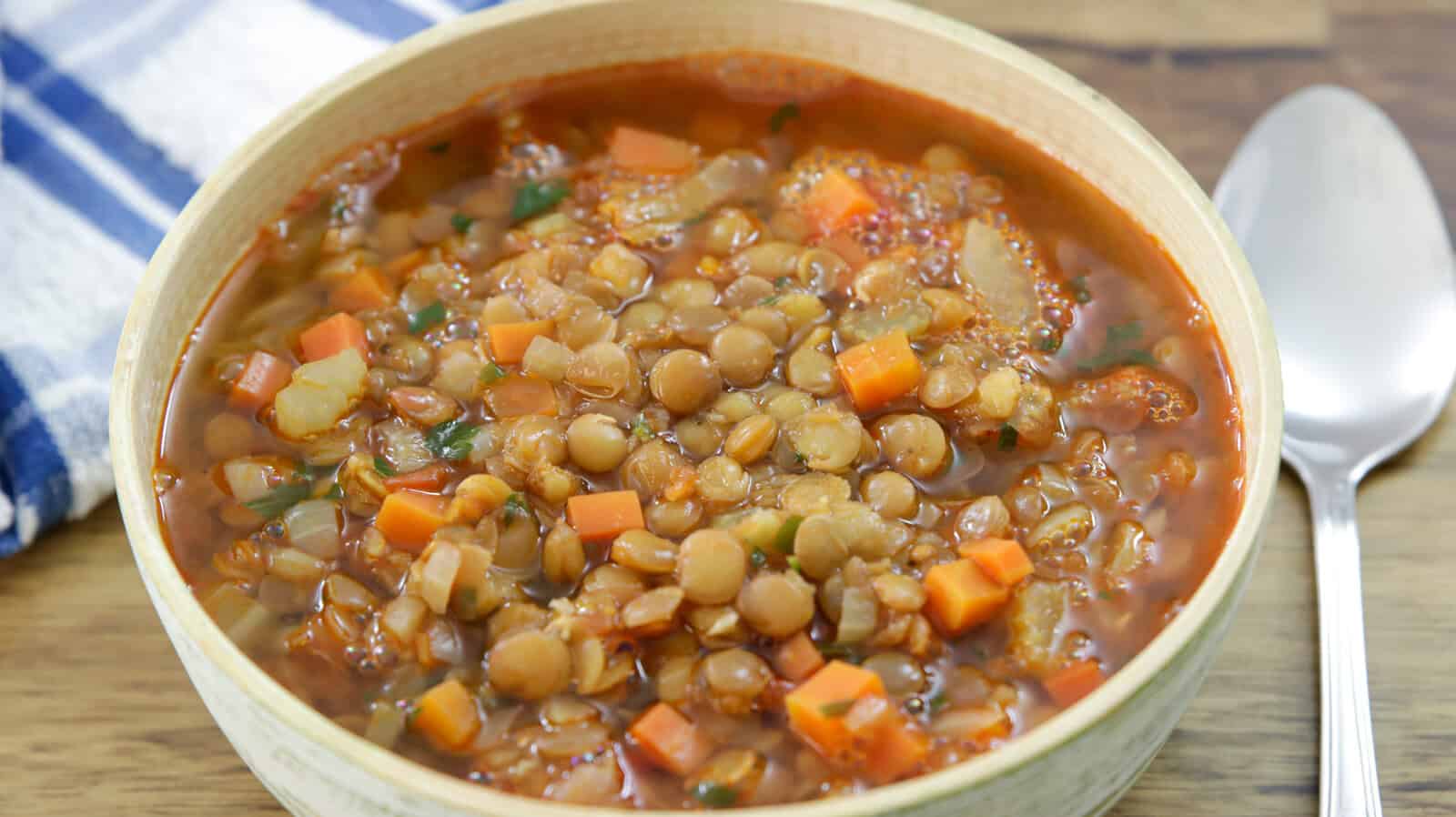
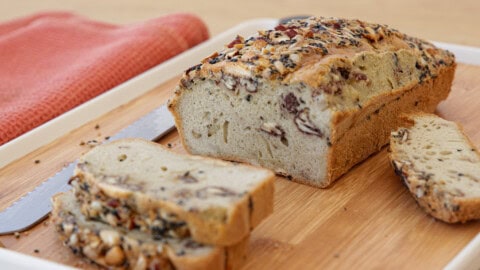
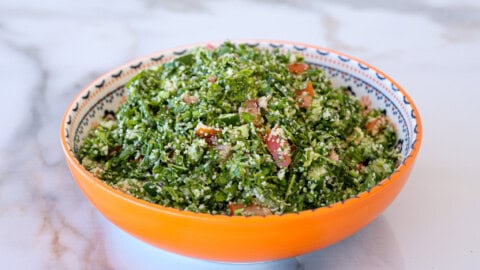
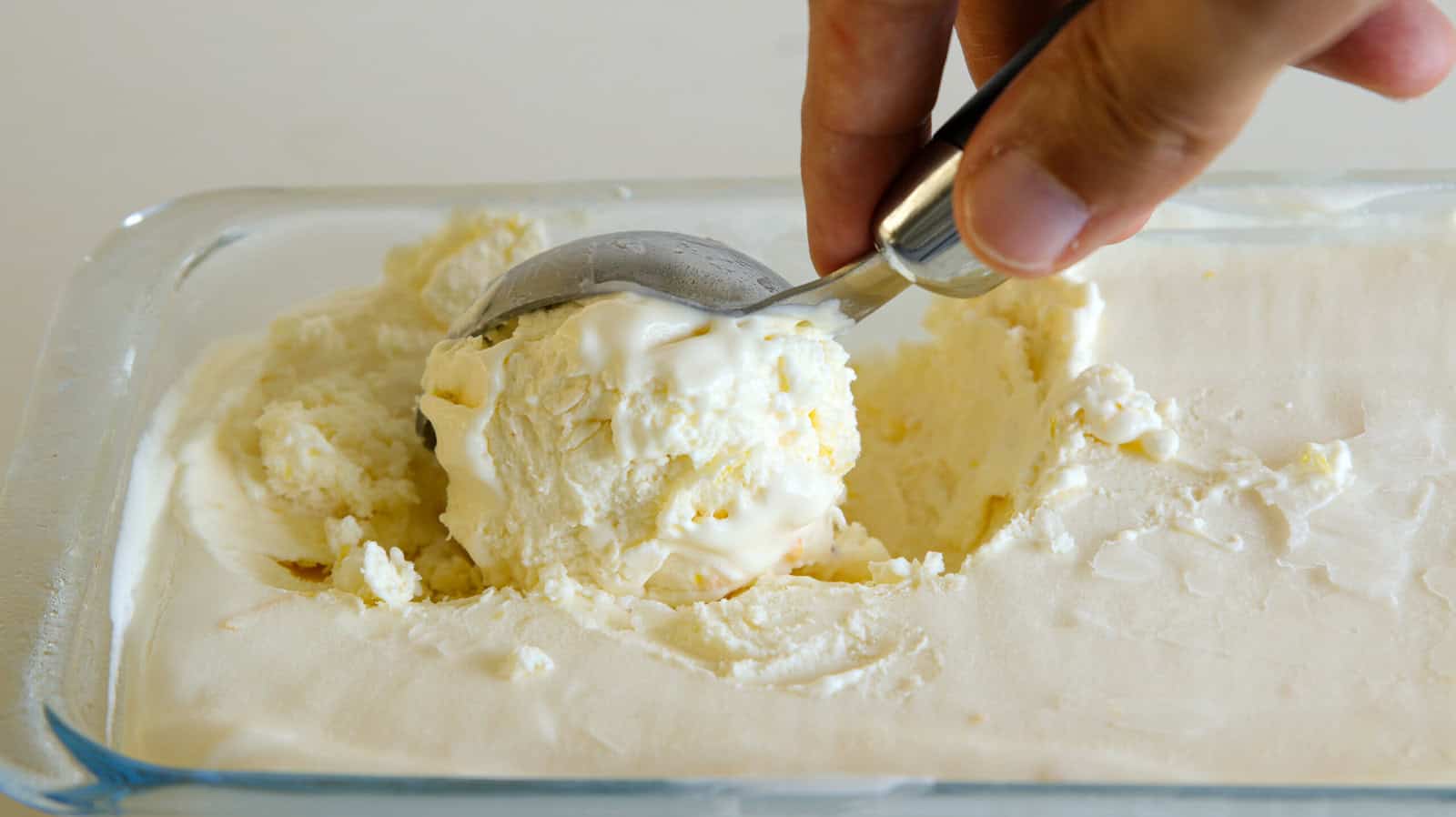
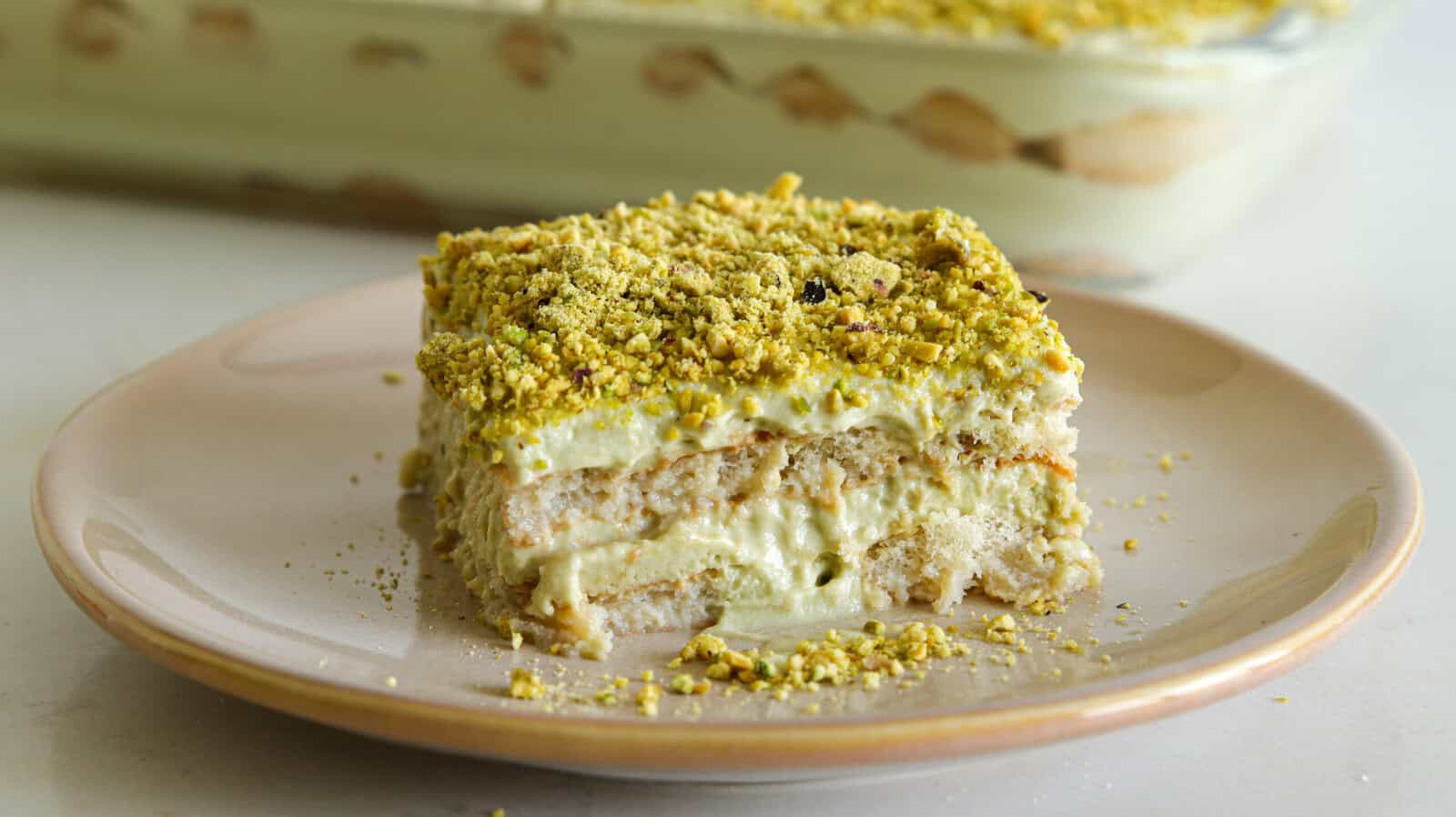
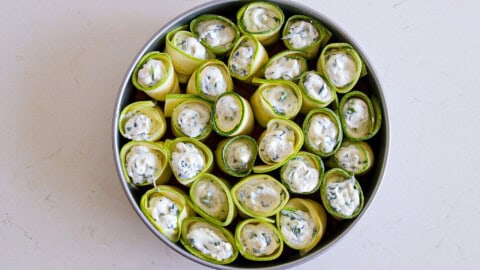
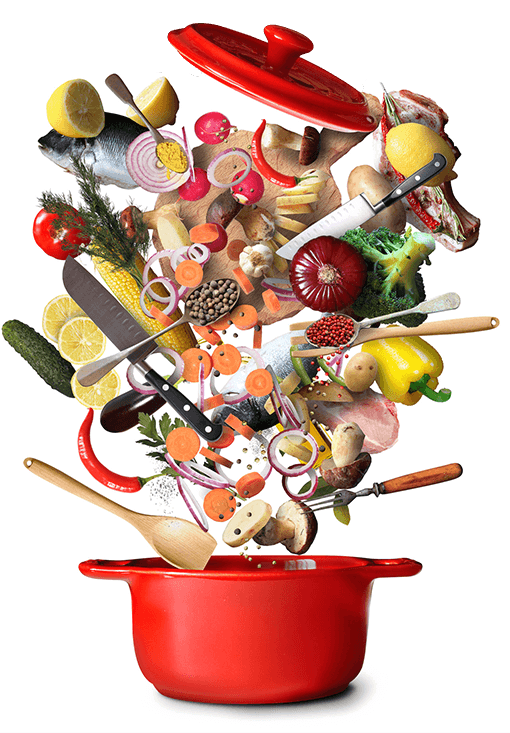

how long can stay preserved in jar please?
For at least 4 weeks if you keep it clean.
thanks
Thank you for the recipe. Made 1/2 kilo of pistachio paste now. Going to try some of your desserts with pistachio paste.
Glad you liked it.
I made your pistachio paste and using this paste I also made pistachio cheesecake.
Was so delicious! My family loved it.
Next time going to try your pistachio tiramisu.
P.s
I accidentally rated 4 stars instead of 5. How can I change it?
Hi Yana,
Glad you liked it.
Unfortunately I can’t change the rating.
Let me know if you try the pistachio tiramisu recipe.
Hi
How long can we store pistachio tiramisu after the preparation
4-5 days in the fridge.
Hello. Thank you for the recipe. Could you tell me around how much pistachio paste can be made with 400g shelled pistachios
It’s hard to tell exactly, but you should get approximately 340-360 grams of pistachio paste.
Nuts should never be roasted at 350F! High heat changes their molecular composition and destroys their beneficial oils. It’s better to roast at 275F – 300F Max… or 250F. One friend never goes past 225F. Yes, it takes longer but you’ll be getting real nutrition from their good oils. You’ll also notice they have a softer, sweeter more mellow flavour plus you’ll be less likely to burn them. Like most nuts, seeds and grains ‘done’ time can vary a bit season to season based on the growing season; amounts of rain/irrigation, sun, harvest, drying and storage and your oven. Don’t rush your nuts. Pre-roasted nuts are cooked in high temperature highly processed vegetable and/or seed oils (bad to start with). Those nuts are a negative toxic ‘food’. They also go rancid very quickly and imo are pure poison. Eat healthy, be healthy.